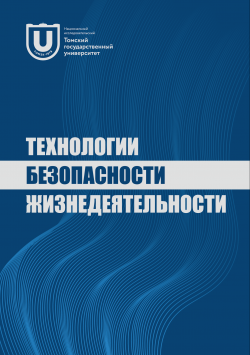Application of IR thermography methods to study wildland fires and combustion processes
The article provides an overview of original methods for studying wildfires and combustion processes using IR thermography. The basic principles of using IR thermography to study combustion processes are formulated, such as temperature fields in the flame, the structure of the turbulent flame formed during the combustion of plant combustible materials, as well as the use of IR thermography to study k-phase combustion. It is shown that the IR thermography can be used to determine the edge of a fire in conditions of heavy smoke. The authors declares no conflicts of interests.
Keywords
wildland fires,
combustion,
flame,
IR thermography,
flame characteristicsAuthors
| Loboda Egor L. | Tomsk State University; V.E. Zuev Institute of Atmospheric Optics of the Siberian Branch of the Russian Academy of Sciences | loboda@mail.tsu.ru |
| Reyno Vladimir V. | V.E. Zuev Institute of Atmospheric Optics of the Siberian Branch of the Russian Academy of Sciences | reyno@iao.ru |
Всего: 2
References
Лобода Е.Л., Рейно В.В., Агафонцев М.В. Применение термографии при исследовании процессов горения. Томск: Изд-во Том. ун-та, 2016. 80 с.
Лобода Е.Л., Рейно В.В., Агафонцев М.В. Выбор спектрального интервала для измерения полей температуры в пламени и регистрации экранированных пламенем высокотемпературных объектов с применением методов ИК-диагностики // Известия вузов. Физика. 2015. Т. 58, № 2. С. 124-128.
Acem Z., Parent G., Monod B. et al. Experimental study in the infrared of the radiative properties of pine needles // Experimental Thermal and Fluid Science. 2010. № 34. P. 893-899.
Agueda A., Pastor E., Perez Y. et al. Experimental study of the emissivity of flames resulting from the combustion of forest fuels // International Journal of Thermal Science. 2010. № 49. P. 543-554.
Boulet P., Parent G., Acem Z. et al. On the emission of radiation by flames and corresponding absorption by vegetation in forest fires // Fire Safety Journal. 2011. Vol. 46 (1-2). P. 21-26.
Ситнов С.А., Мохов И.И., Джола А.В. Влияние сибирских пожаров на содержание монооксида углерода в атмосфере над европейской частью России летом 2016 г. // Оптика атмосферы и океана. 2017. Т. 30, № 2. С. 146-152.
Лобода Е.Л., Рейно В.В. Влияние коэффициента излучения пламени на измерение температур ИК-методами при горении лесных и степных горючих материалов при различном влагосодержании. Частотный анализ изменения температуры // Оптика атмосферы и океана. 2011. № 11. С. 1002-1004.
Loboda E.L., Matvienko O. V., Vavilov V.P., Reyno V. V. Infrared thermographic evaluation of flame turbulence scale // Infrared Phys. Technol. 2015. Vol. 72. P. 1-7.
Loboda E.L., Anufriev I.S., Agafontsev M. V., Kop'ev E.P., Shadrin E.I., Rejno V. V., Vavilov V.P., Lucenko A. V. Evaluating characteristics of turbulent flames by using IR thermography and PIV // Infrared Physics and Technology. 2018. Vol. 92. P. 240-243.
Loboda E.L., Matvienko O. V., Agafontsev M. V., Reyno V. V., Vavilov V.P. IR thermography study of flow structure and parameters in diffusion flames // Infrared Physics and Technology. 2021. Vol. 117. P. 1-11.
